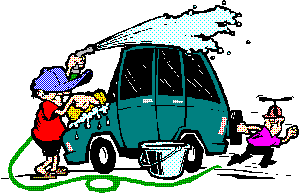| ESE504 : The Class : Advanced CD : Chapters Six - Eight | |||||
Enhancing Motivation
Methods and Materials
The next few chapters provide insights into the methods and materials that help students learn. You will have an opportunity to build a teaching portfolio, including teaching strategies and tactics for individualizing instruction and providing support to students in different categories of ability.
1. Set up a system for collecting interventions, methods and materials to facilitate teaching.
2. Categorize the strategies and interventions by type of activity and most appropriate use.
3. The following didactic will help you to organize the strategy and catalogue it for use in the classroom.
| Grade Level ______ |
Chapter 7
|
Chapter 8
|
Chapter 9
|
|
Strategy = S Individualization = I Novel notion =N Group activity = G |
S I N G |
S I N G |
S I N G |
|---|---|---|---|
| At-risk LD | |||
| Autism | |||
| Behavior issues | |||
| Communications | |||
| Gifted | |||
| Health issues | |||
| Hearing | |||
| Learning disability | |||
| Mild Dev Delay | |||
| Moderate DD | |||
| Low Incidence | |||
| Physical | |||
| TBI | |||
| Visual |
No matter how many ways we adapt learning activities, the critical piece is still
to do what is best for the student.

The STUDENT is the CRITICAL PIECE.
![]() Content is important,
Content is important,
![]() the community of learners is important,
the community of learners is important,
![]() the teacher is important - - -
the teacher is important - - -
but the student is the critical piece. ![]()
 Remember:
It is in valuing each student, supporting the strengths and accepting
who the child -- that is the important foundational piece. It is certainly
possible to find numerous ways to teach subjects simultaneously with building
the youth --- but the important piece is wanting the child as is = who
and what he or she is, and honoring and fine tuning who the child may
become rather than working to change the impossible.
Remember:
It is in valuing each student, supporting the strengths and accepting
who the child -- that is the important foundational piece. It is certainly
possible to find numerous ways to teach subjects simultaneously with building
the youth --- but the important piece is wanting the child as is = who
and what he or she is, and honoring and fine tuning who the child may
become rather than working to change the impossible.
![]()
If a child cannot carry a tune, we can provide lessons to increase singing quality--- but the basic inability to stay in tune will still be there - and the child is not a good candidate for an acapella singing group.
If a child has seizures, it is a bad idea to expect them to "tell themselves" to stop having seizures and unfortunate to set the student up to learn to be a long distance truck driver.
![]()
This can be an endless list.
What do we ask of the child with ADD?
What do we focus on when a child is dyslexic?
![]()
How will you balance the human need to have - with what we don't have or can't have?
How will you balance disappointment with realism?
How do you guide a youngster or a family to recognize the difference between goals that make sense for a student, like learning to button or to tie shoes and some that may not make sense, like being responsible for finances, or going to college to be a teacher?
How do you temper hopes and dreams without seeming cruel?
What is the magic place in self esteem that says "I like you just the way you are -- but I know you can take your greatness, your gift, your challenges one step further?
![]()
Teachers have always felt empowered to develop individualized classroom teaching styles. These chapters facilitate teacher expertise in building on student strengths and gifts as well as developing strategies to meet instructional challenges.
E-mail J'Anne Ellsworth at Janne.Ellsworth@nau.edu
Course developed by J'Anne
Ellsworth
![]()
Copyright © 1999
Northern Arizona University
ALL RIGHTS RESERVED
